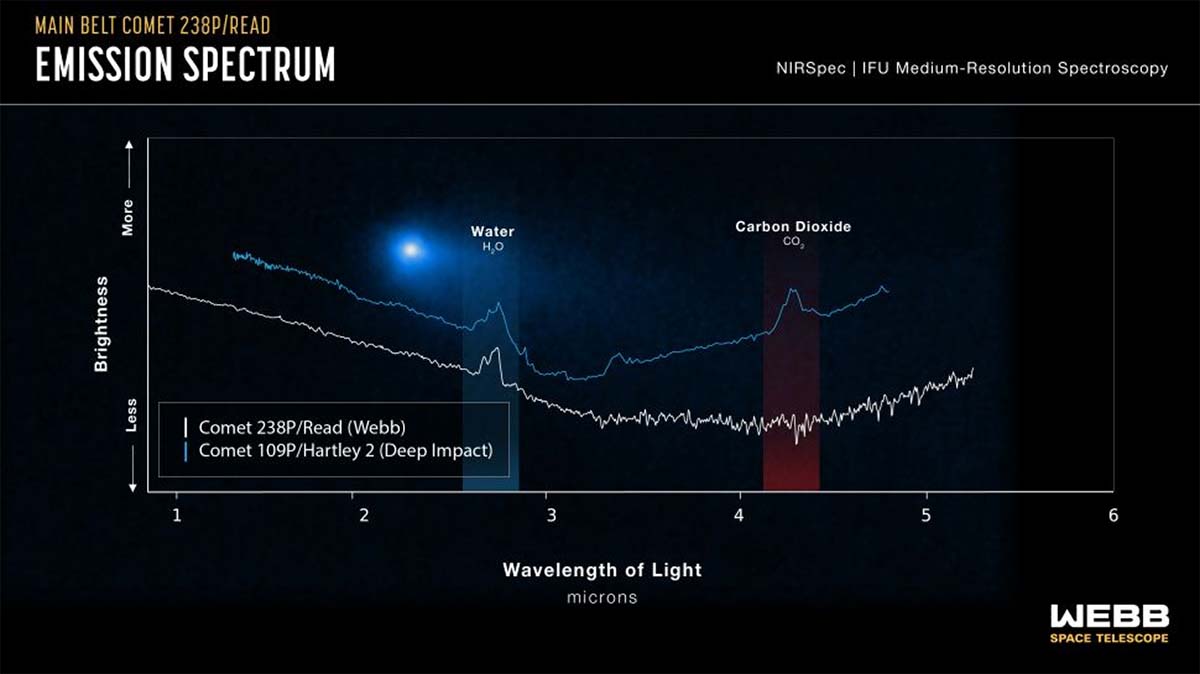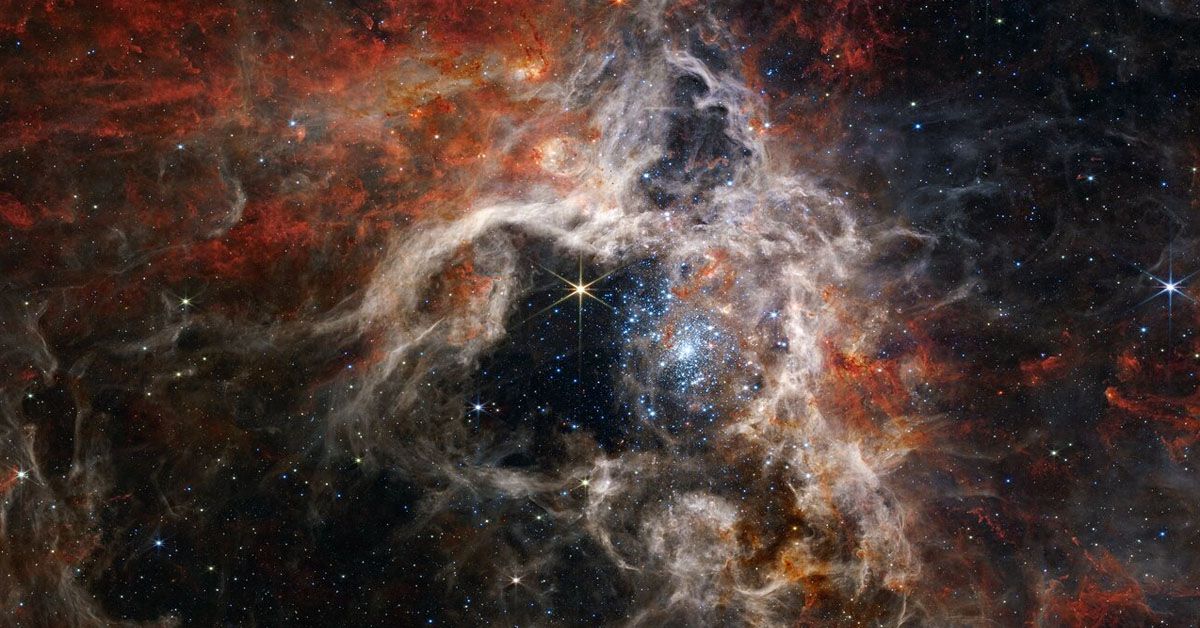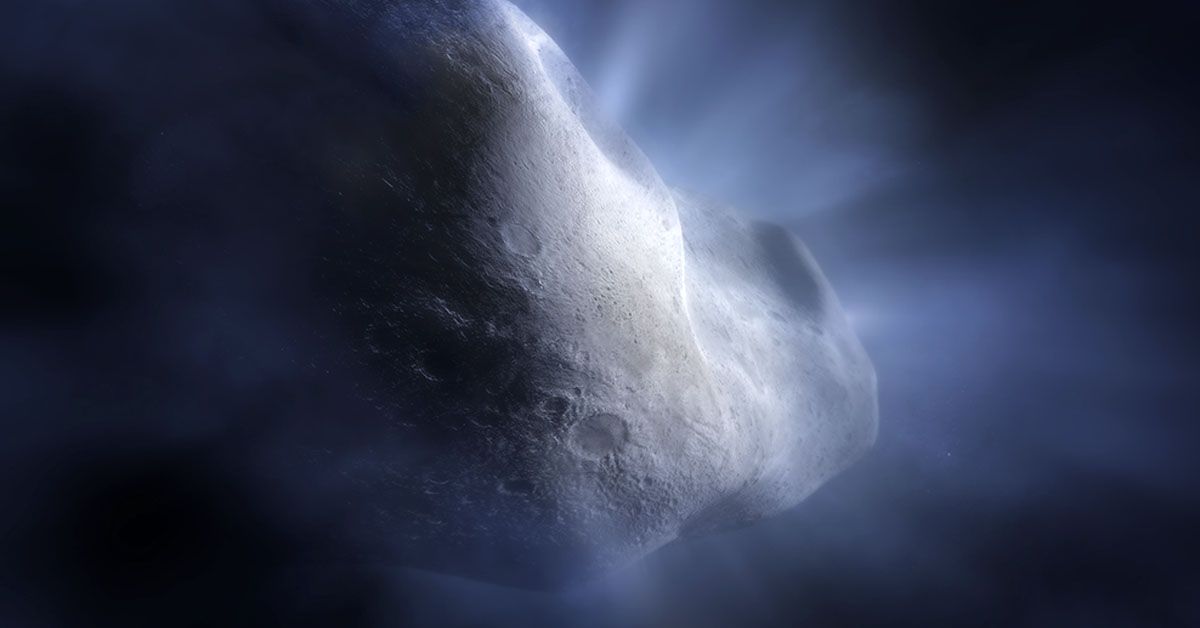In an age when science fiction is becoming our reality, the cosmos has again reminded us of its untapped well of surprises. The James Webb Space Telescope, our intrepid cosmic detective, has made a groundbreaking discovery that might just rewrite our understanding of the solar system. This orbital observatory has detected water vapor encircling Comet 238P/Read, a rare celestial traveler located in the main asteroid belt, a region primarily populated by rocky bodies.
But hold onto your telescopes, because this is no ordinary find. This is the first time we've detected water vapor around a comet residing within the main asteroid belt. Comet 238P/Read, tucked away between the orbits of Mars and Jupiter, has always been a point of intrigue due to its rarity. And now, it emerges as the protagonist in an astronomical drama that could answer one of the most tantalizing questions: how did water, the elixir of life, arrive on our home planet, Earth?
Comet 238P/Read: A Rare Gem in the Main Asteroid Belt
Picture a vast expanse of space between Mars and Jupiter, primarily populated by rocky bodies. This is the main asteroid belt, the neighborhood of our celestial protagonist, Comet 238P/Read. It's like finding a snowball in a rocky desert. A rare gem, indeed.

Comet 238P/Read is not your everyday comet. It's a main belt comet, a new class of comets that live within the asteroid belt. Every so often, it brightens up, putting on a spectacular show. A shroud of gas and dust, known as a coma, forms around it, and a glowing tail streams away from the sun. This dramatic transformation, called sublimation, is caused when the comet's icy core heats up and changes directly from a solid to a gas.
The Evidence of Water and Missing Carbon Dioxide
Finding water vapor around Comet 238P/Read is like discovering a piece of the puzzle we didn't know we were missing. This detection supports the hypothesis that water ice, a remnant from the early solar system, could be preserved in the asteroid belt. It's a tantalizing clue to unraveling how water, the lifeline of our planet, might have been delivered to Earth.
But the story gets even more intriguing. When scientists studied the comet, they found something or rather, didn't find something. Carbon dioxide, a compound typically seen in comets, was nowhere to be found. This lack of carbon dioxide is a bit like finding a snowman without a carrot nose, highly unusual and downright puzzling. It raises questions about the comet's formation and history. Was Comet 238P/Read always like this, or did it change over time?

There are two leading theories to explain this carbon dioxide conundrum. One possibility is that the comet could have lost its carbon dioxide due to solar warming over the eons. Another suggests that the comet might have formed in a region devoid of carbon dioxide. But as of now, these are just educated guesses. The real answer still lies hidden, waiting to be unearthed by future explorations.
Implications of the Discovery
Unearthing water around a main-belt comet is a revelation that has sent ripples of surprise beyond the confines of our solar system. The finding that water ice from the dawn of our solar system might have survived in the asteroid belt, an area previously considered too warm for such conservation, fundamentally challenges our perceptions of the early solar system.
So, what's the big deal for us? Simply put, it strengthens the proposition that comets, those frosty wanderers of the cosmos, might have played the role of Earth's ancient water carriers. Envision these cosmic icebergs, brimming with water ice, impacting Earth billions of years in the past, contributing the vital water that would eventually form our vast seas.

However, the implications don't stop there. This discovery reshapes our comprehension of water distribution throughout the solar system. If water can persist in a location as improbable as the main asteroid belt, where else might it be lurking? And how does this pattern of dispersion influence the likelihood of life as we understand it? This isn't solely a matter of our solar system but extends to the wider exploration of exoplanetary systems. If the notion of comets as universal water couriers hold true, it could offer us invaluable insights into life prospects beyond our celestial neighborhood.
Sources: webbtelescope.org / space.com / scitechdaily.com













